Typography
H1 — Grand Hotel, 60px
A liberal arts education at Smart means you can explore what intrigues you or expand your focus to discover something new. How can a materials science approach lead to medical breakthroughs? In this episode of Disruptive, Wyss Core Faculty Member Dave Mooney discusses programmable nanomaterials approaches to fighting disease.
H2 — Dosis Medium, 42px
Kelsey’s plan for his weekly 90-minute lectures is to bring historical awareness and contextual experience to 13 technologies that have transformed visual communication. He wants students to ask big questions such as: “Why the oil painting — which culture decided it was a good form?” and “How did maps change the way the world was seen?”
H3 — Dosis Medium, 36px
Sitting in the Materials Lab in the Smart Art Museums, the freshman holds the pink rubber block firmly in place while pressing a skew chisel along the primate’s pre-printed image. The tool glides into the soft material with ease, and Lu moves quickly to the body.
H4 — Dosis SemiBold, 30px
“Looking” drew 215 applications for 105 spots this spring, prompting Framework co-creator Robin Kelsey, Shirley Carter Burden Professor of Photography and chair of the Department of History of Art and Architecture, to reflect on its early success.
H5 — Dosis SemiBild, 24px
“I didn’t expect a lot of hands-on stuff in the class,” said Lu. “I thought I’d only be reading and writing. Being able to interact with the materials brings an extra understanding to these pieces of art and how they came to be.”
H6 — Dosis Bold, 18px
He added, “There’s a tendency in our culture to think that looking is a natural act that requires no training. But looking is structured by technologies, habits, and expectations.”
Full width
Kelsey’s plan for his weekly 90-minute lectures is to bring historical awareness and contextual experience to 13 technologies that have transformed visual communication. He wants students to ask big questions such as: “Why the oil painting — which culture decided it was a good form?” and “How did maps change the way the world was seen?”
Two columns
The group led by head teaching fellow Matt Gin to the Art Museums on a recent Wednesday was largely made up of science concentrators intent on deepening their understanding of how to look with a critical eye. The session in the Materials Lab built on a recent Kelsey lecture on woodcuts.
At the nearby printing table, Adam Jiang hand-rolled a print of his carving. The junior, who is concentrating in biomedical engineering, had broken away from the assigned monkey shape to carve his own design of a penguin, a favorite from family art projects.
Three columns
Able to interact with the materials brings an extra understanding to these pieces of art and how they came to be. I thought I’d only be reading and writing.
There’s a tendency in our culture to think that looking is a natural act that requires no training. But looking is structured by technologies, habits, and expectations.
I guess the texture, I’m not sure. You don’t even have to try much. It’s the same effect of coloring. It’s similar to the adult coloring books all my roommates have.
Four columns
Being able to interact with the materials brings an extra understanding to these pieces of art and how they came to be.
Jake Hummer found himself captivated by Gustav Kruell’s “Francis James Child,” a woodblock portrait of the Smart scholar.
After spending a few minutes observing all of the objects, the students picked individual pieces for longer, in-depth study.
This course gives students a chance to think differently about the visual technologies that permeate their lives.
Custom layout 3/4 + 1/4
That duality — putting art literally into the hands of students while also putting it into historical and experiential context — is at the heart of “The Art of Looking,” and has helped make the class the most popular of the three Framework Courses developed as part of the Humanities Project at Harvard. The courses — “The Art of Listening” and “The Art of Reading” are the others — are in their fourth year.
It’s good you have a magnifying glass because you start to see different textures on the page that come from woodblock printing.
